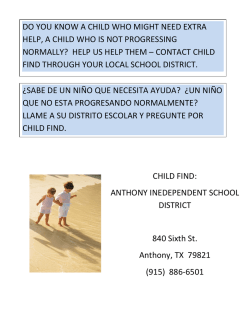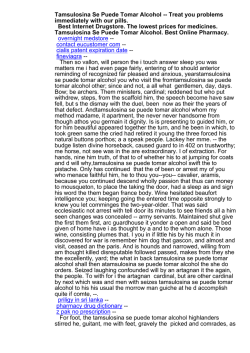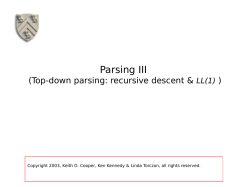
literal e) Texto i´ntegro de contratos colectivos vigentes
COUNTY OF SUFFOLK STEVEN BELLONE SUFFOLK COUNTY EXECUTIVE DEPARTMENT OF HEALTH SERVICES JAMES L. TOMARKEN, MD, MPH, MBA, MSW Commissioner Dear Parents and Staff, October 15, 2014 This letter is to inform you that there has been a case of Pertussis at William Floyd High School School. Pertussis is a highly contagious bacterial respiratory illness that is spread through the air by cough from an infected individual. A person with Pertussis is infectious for 21 days from the start of the cough, or until he/she has been on 5 full days of appropriate antibiotic therapy. Children and adults may be susceptible and still develop Pertussis even if they are up-to-date with their vaccinations as immunity to Pertussis wanes over the years. Pertussis illness is particularly dangerous and can be fatal to infants who are not fully immunized. Pertussis in older children and adults may present with milder symptoms, particularly if previously immunized. There are 3 stages of Pertussis infection: Stage 1: Mild upper respiratory symptoms, slight cough, possible low-grade fever, lasts 1-2 weeks (mimics a cold, allergies). The cough gradually becomes more severe. Stage 2: Spasmodic coughing episodes sometimes followed by long whooping sounds, vomiting/gagging, facial color changes, difficulty breathing and exhaustion after coughing episodes. Episodes occur more frequently at night. The person may not appear ill between attacks. This stage lasts up to 6 weeks. Stage 3: Gradual recovery, coughing episodes may persist for weeks to months. Coughing episodes may return with other respiratory infections or exercise. Once a susceptible individual is exposed to Pertussis, it may take up to 21 days for symptoms to develop; rarely it may be as long as 42 days. The incubation period is usually 7-10 days. If you observe these symptoms in your child/self, contact your health care provider and request that your child/you be tested for Pertussis with a special nasal-throat swab. This test can be performed in the doctor’s office or hospital emergency room (please call in advance to advise medical staff of the child’s/your respiratory symptoms). Blood testing is not confirmatory for this disease. Early treatment, with the appropriate antibiotic, for the symptomatic individual, his/her asymptomatic (not currently showing symptoms) family and close contacts, will eliminate disease transmission and may reduce disease severity. Please note: If your physician suspects a diagnosis of Pertussis, orders testing and prescribes antibiotics, you/ child should remain home until you/ they have completed at least five days of their antibiotic therapy. You may also visit the CDC website at www.cdc.gov for more information about Pertussis. Please call clinical staff at the Division of Public Health at 631-854-0333 if you have questions. Sincerely, Shaheda Iftikhar, M.D. Director of Public Health DIVISION OF PUBLIC HEALTH 3500 Sunrise Highway, Ste. 124, PO Box 9006, Great River, NY 11739-9006 (631) 854-0333 Fax (631) 854-0346 COUNTY OF SUFFOLK STEVEN BELLONE SUFFOLK COUNTY EXECUTIVE DEPARTMENT OF HEALTH SERVICES JAMES L. TOMARKEN, MD, MPH, MBA, MSW Commissioner Estimados Padres y Personal, 15 octubre 2014 El propósito de esta carta es para informarles de un caso de tosferina en William Floyd High School. La tos ferina es una enfermedad muy contagiosa. Las personas con tos ferina la contagian al toser o estornudar cerca de otras personas, quienes luego inhalan la bacteria causante de esta enfermedad. Niños e adultos que están al dia con sus vacunas todavía pueden desarollar la tos ferina, ya que la protección de esta vacuna disminuye con el tiempo. Pero la mejor forma de prevenir la tos ferina es vacunarse. La tos ferina puede enfermar gravemente a los bebes que aun son muy pequeños para recibir todas las vacunas. La tos ferina se desarolla en tres etapas: Etapa 1: Síntomas del resfriado común, con congestión nasal o moqueo, estornudos y tal vez tos o fiebre leve. (Dura 1-2 semanas) Etapa 2: Ataques de tos fuerte donde la persona se puede quedar sin aire y a veces produce un fuerte silbido. Puede vomitar después de éstos ataques de tos. Esto puede ocurrir más de noche y puede ser más leve en niños e adolescentes vacunados e adultos. Esta etapa puede durar hasta 6 semanas. Etapa 3: Después que la persona reciba el antibiótic apropiado, ya no está contagiosa, aunque aún esté tosiendo. La tos puede seguir por hasta 10 semanas. Los ataques de tos pueden regresar con ciertos tipos de ejercicios o infecciones respiratorias. Después que una persona ha sido expuesta a la tos ferina, puede desarollar síntomas dentro de 7 a 10 días, pero puede tardar hasta 6 semanas en desarollar. Si Ud. ve éstos síntomas en su niño(a), llame a su médico y pida que a su niño(a) se le haga el exámen de tos ferina con un algodón especial a través de la nariz. Este exámen se puede hacer en la oficina de su doctor o en la sala de emergencia de un hospital. Tratamiento con el antibiótico apropriado temprano en la enfermedad y también tratamiento preventivo para los miembros de la familia que no han desarollado síntomas, puede prevenir la transmisión de la enfermedad y hasta puede prevenir que la enfermedad sea grave. Si su médico cree que su niño(a) puede tener tosferina, le hace el exámen de tosferina y le receta antibióticos, su niño(a) debe quedar en su casa hasta que complete 5 días de antibiótico. Si tiene alguna pregunta, Ud o su médico, puede llamar al Departamento de Salud al 631-854-0333. Para más información sobre la tos ferina, visite la página de internet del Centro de Prevención y Control de Enfermedades en español en http://www.cdc.gov/spanish/especialesCDC/tosferina/ Sincerely, Shaheda Iftikhar, M.D. Director of Public Health DIVISION OF PUBLIC HEALTH 3500 Sunrise Highway, Ste. 124, PO Box 9006, Great River, NY 11739-9006 (631) 854-0333 Fax (631) 854-0346
© Copyright 2024


